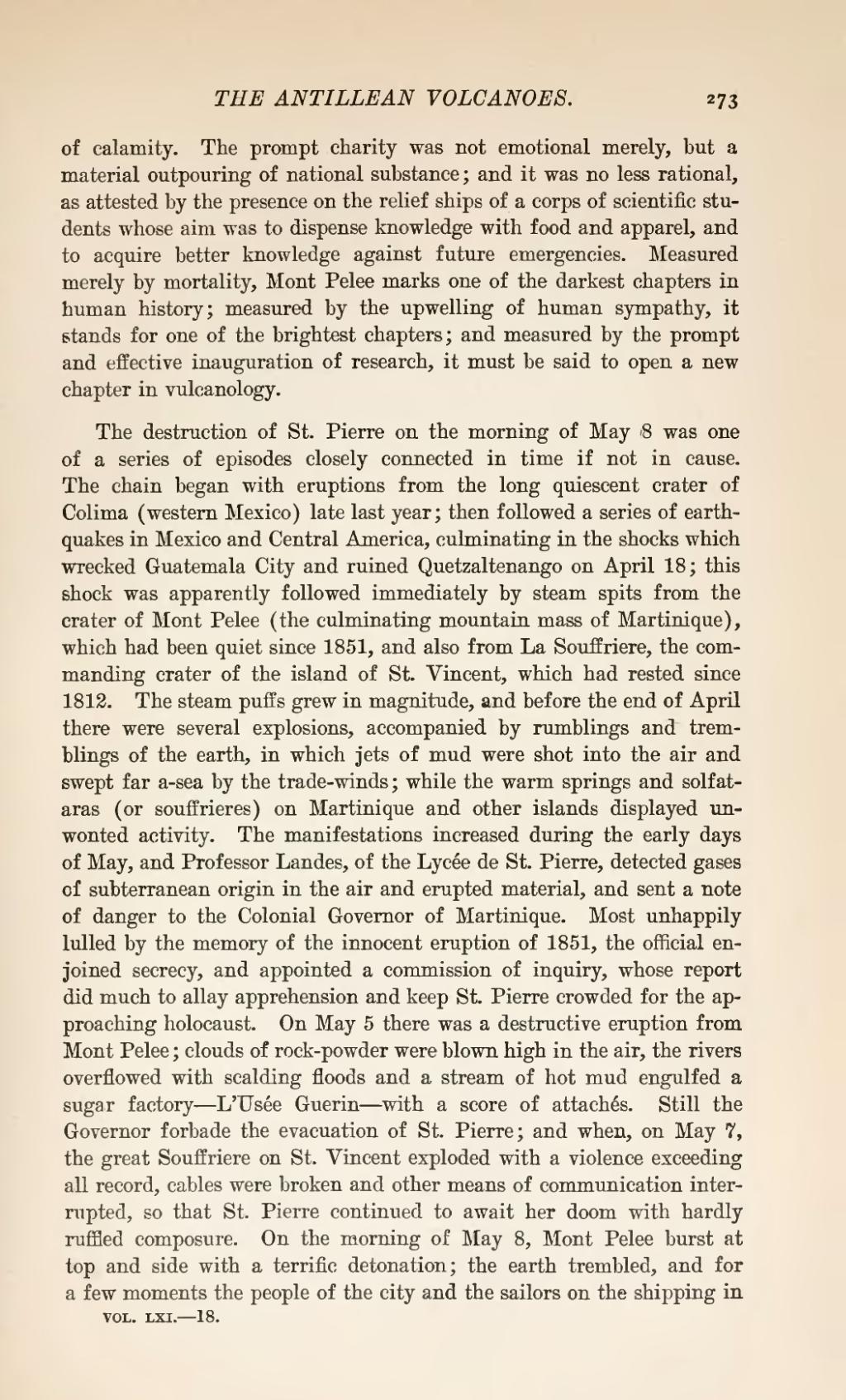of calamity. The prompt charity was not emotional merely, but a material outpouring of national substance; and it was no less rational, as attested by the presence on the relief ships of a corps of scientific students whose aim was to dispense knowledge with food and apparel, and to acquire better knowledge against future emergencies. Measured merely by mortality, Mont Pelee marks one of the darkest chapters in human history; measured by the upwelling of human sympathy, it stands for one of the brightest chapters; and measured by the prompt and effective inauguration of research, it must be said to open a new chapter in vulcanology.
The destruction of St. Pierre on the morning of May 18 was one of a series of episodes closely connected in time if not in cause. The chain began with eruptions from the long quiescent crater of Colima (western Mexico) late last year; then followed a series of earthquakes in Mexico and Central America, culminating in the shocks which wrecked Guatemala City and ruined Quetzaltenango on April 18; this shock was apparently followed immediately by steam spits from the crater of Mont Pelee (the culminating mountain mass of Martinique), which had been quiet since 1851, and also from La Souffriere, the commanding crater of the island of St. Vincent, which had rested since 1812. The steam puffs grew in magnitude, and before the end of April there were several explosions, accompanied by rumblings and tremblings of the earth, in which jets of mud were shot into the air and swept far a-sea by the trade-winds; while the warm springs and solfataras (or souffrieres) on Martinique and other islands displayed unwonted activity. The manifestations increased during the early days of May, and Professor Landes, of the Lycée de St. Pierre, detected gases of subterranean origin in the air and erupted material, and sent a note of danger to the Colonial Governor of Martinique. Most unhappily lulled by the memory of the innocent eruption of 1851, the official enjoined secrecy, and appointed a commission of inquiry, whose report did much to allay apprehension and keep St. Pierre crowded for the approaching holocaust. On May 5 there was a destructive eruption from Mont Pelee; clouds of rock-powder were blown high in the air, the rivers overflowed with scalding floods and a stream of hot mud engulfed a sugar factory—L'Usée Guerin—with a score of attachés. Still the Governor forbade the evacuation of St. Pierre; and when, on May 7, the great Souffriere on St. Vincent exploded with a violence exceeding all record, cables were broken and other means of communication interrupted, so that St. Pierre continued to await her doom with hardly ruffled composure. On the morning of May 8, Mont Pelee burst at top and side with a terrific detonation; the earth trembled, and for a few moments the people of the city and the sailors on the shipping in
